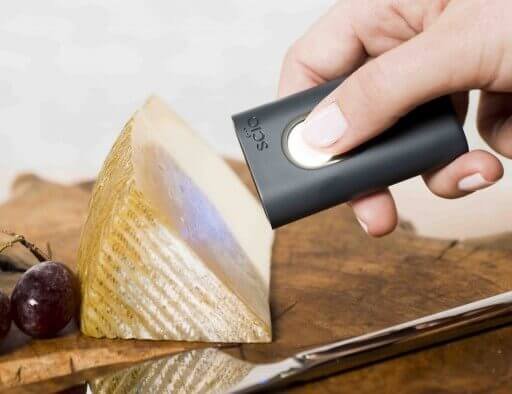Have you ever wondered what you eat… Or rather, what do the foods chosen from the supermarket shelves contain?
It often happens that we don’t know what the foods we bring to the table really contain, sometimes the negligence of reading the labels, or the trust in the most advertised brand give us security and therefore we tend not to check. In addition to the percentage of calories, fats, or sugars, for many it is necessary to know what is contained in the dish also for any allergies or intolerances.
So keeping track of what we eat is important to have a healthy diet, but is it always feasible?
It seems that technology has helped to overcome this problem in this case as well. How so? Have you ever heard of food scanners?
More than 10 years ago, the telephony giant Nokia designed Morph, the first mobile device made using nanotechnology, which allows the physical properties of nanostructures and devices to be controlled with the precision of a single molecule and to be invisible to the human eye.
Morph is characterized by an innovative ductility, flexibility and strength that make it ready to change shape and appearance at any time, it can be wrapped or bent and always works the same way.
In addition, it does not need to be cleaned, it will always look like it has just been bought, again thanks to nanotechnology.
In recent years, several companies have been involved in creating different versions of food scanners.
In 2017, the European Commission awards a prize for innovation in food scanners. The
€1 million Horizon prize was divided into three parts: €800,000 to the winner, Spectral Engines
, and €100,000 each to the two runners-up, SCiOscan
and Tellspec
.
“The challenge posed for this €1 million award was to develop a cost-effective, non-invasive mobile solution that would allow users to measure and analyse their food intake.”
In all three cases, the molecular scanners are based on similar technologies. They examine food with light and observe how it interacts with objects. This data is then sent to the cloud which analyzes it and reports information on the matter.
Among the winners is the work of SCiOscan, in collaboration with a Chinese company, which has designed Changhong H2, the first smartphone to have an integrated NIR spectrometer . The sensor, in addition to giving information on food, also allows you to analyze more sensitive objects such as medicines, to unmask any fakes. Not only that, the sensor can also be pointed at our body to have a measure of the state of hydration and the percentage of fat mass, with an estimate of these values that the manufacturer declares more precise than that of scales with electrical impedance measurement.
In 2019, the NIR laser also gave rise to another project, put in place by researchers at the
Fraunhofer IOSB
.
In this case, the user is able to receive information about the shelf life of the products. The scanner sends the measured data via Bluetooth to a database in the cloud for analysis. Then the test results are transmitted to an app that displays them to the user and shows how long the food will stay fresh under different storage conditions or indicates that its shelf life has already expired.


